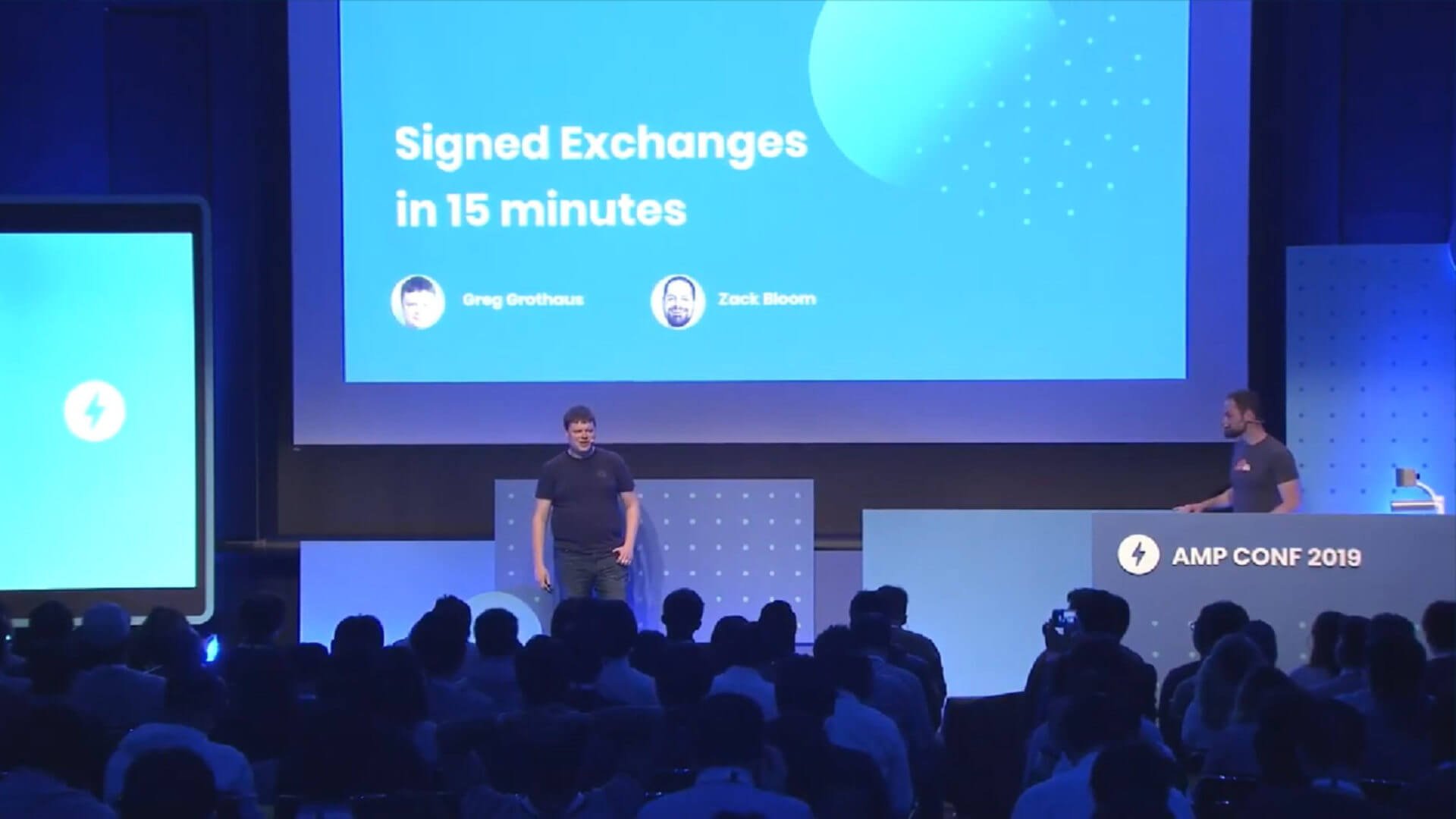
Greg Grothaus of Google unveils signed exchanges change to AMP at the AMP Conference in Tokyo on April 17, 2019.
On Tuesday, Google announced that its enabling publishers to display their own URLs on AMP pages by using Signed Exchanges. This solution addresses one of the most prominent AMP criticisms, but its implementation doesn’t come without controversy.
This GIF sums up how AMP page URLs can now be displayed if websites get on board with Signed HTTP Exchanges.
AMP pages are beautiful, but links to AMP pages? Not so much …
Until today! Signed exchanges are here: now you can get instant loading for AMP on your own domain! 🙌 #AMPConf pic.twitter.com/OSEcKDc3A5
— AMP Project (@AMPhtml) April 17, 2019
Some are excited about the possibilities.
This is big & exciting news. Does anyone know if there’s a requirement as to whether the #AMP content must live in a subdomain or if it can load as a regular page on your domain? https://t.co/OtOO9IaDlK
— Lily Ray (@lilyraynyc) April 17, 2019
Unpopular opinion I guess, but despite the shittiness of AMP, the SXG tech that will soon be powering it (https://t.co/pm8paULfQB) is absolutely the way the web should be moving. This is the beginning of the decentralized web that we’ve all been dreaming of since the 90s.
— Dean Pierce 🚢 (@deanpierce) April 17, 2019
While others are worried about the ethics.
Why does it sound more and more like assimilation rather than acceleration?
“Google takes a tiny step toward fixing AMP’s URL problem – It’s only supported on Chrome right now”https://t.co/zJDJ8sc2xg— Abhinav Agarwal (@AbhinavAgarwal) April 17, 2019
Pierre Far, a former Google employee, sent out a thread of tweets highlighting his concerns over Google foregoing the standardization process and how it may have security implications.
A useful idea in principle, but it has problems right now.
It breaks many assumptions about how the web works. It breaks how the browsers’ UIs and security signals currently work, the same ones we’ve been hammering into users to look for to establish trust in a website.
— Pierre Far (@pierrefar) April 17, 2019
You can’t blame people for being suspicious of Google when one of their own authored the Signed HTTP Exchange specifications — even if they’re upfront about it.
I think it’s fair to say we’re pushing it. The question is our motives, which I claim is to improve the web rather than to “all your base” it, but I would say that either way. If you see design changes that would ⬇️ the “all your base” chances w/o breaking use cases, let me know.
— Jeffrey Yasskin (@jyasskin) April 17, 2019
Sometimes we need to be reminded that, despite its decisions carrying so much weight, Google doesn’t own the internet.
Just another attempt by @Google to control what users see, and force publishers to be a part of the AMP Project. #AMPConf
Even @mozilla considers Signed HTTP Exchanges harmful for the web: https://t.co/lcjT0xNxwT https://t.co/WGqdWzcOCC
— 👨🏻💻 (@aayushjain) April 17, 2019
Here’s a screenshot of Mozilla’s current position on Signed HTTP Exchanges.

Why we should care
Domain names are important for branding and publishing content under our own banners without sacrificing speed or mobile optimization can certainly improve the user experience. The compromise we have to consider before getting on board with Signed HTTP Exchanges is whether we’re willing to allow a third party to serve up our content without users being able to tell the difference.
If we, as digital marketers, want to influence the conventions of our future work environment, we’ll have to decide if the gains are enough to disrupt long-standing assumptions of how websites are delivered. If so, we’ll also have to cede the ability to judge user intent over to Google and swallow the fact that it skipped over the standardization process to implement a process that one of its own created.
